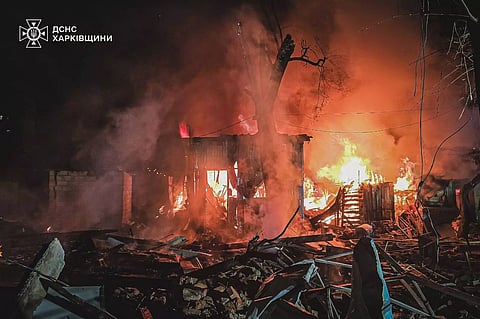

Russia has started airstrikes this week on the Territorial Recruitment Centers (TRC) of Ukraine in an apparent new strategy to degrade Kiev’s ability to conscript new personnel into Ukraine’s armed forces.
On Monday, Russia launched a drone strike using Geran drones on the Krivoy Rog TRC, while on Thursday Geran drones were launched on the Poltava TRC, in strikes that were reported to have caused disruptions to the operation of these centers. Thursday’s strike was reported to have injured four Ukrainian military personnel, including two from the TRC and two regular Ukrainian servicemen.
Vitalii Sarantsev, spokesperson for the Ukrainian Ground Forces, commented on the strikes on Thursday, describing them as a “systemic effort” to disrupt Ukraine’s mobilization process.
Up until this week, Russia had yet to target any of the TRCs, which are responsible for conscripting men into Ukraine’s armed forces, often through increasingly forceful measures. In the last year, Ukraine’s ability to replenish the ranks of its armed forces has relied heavily on forced conscription, as recruitment campaigns aimed at enticing volunteers have failed, and many of those who joined in 2022 and 2023 have since been killed or wounded.
In a video that emerged of the strikes in Poltava on Thursday, a notable absence was Ukrainian air defenses, which appeared to be non-existent in countering the drone attacks. This reflects a broader degradation in Ukraine’s air defense capacity—an issue that has become increasingly acute since the U.S. suspended shipments of certain weapons, including Patriot air defense missiles.
The overt strikes this week also coincide with a surge in attacks on TRC personnel and centers by Ukrainian citizens, including three bombings at regional TRC offices carried out over the course of five days in February. While Ukraine’s Security Service (SBU) has claimed these were orchestrated by Russian intelligence, the growing unpopularity of the TRC system—due to its street-level conscription tactics—combined with a rising number of altercations between civilians and TRC officers, may indicate that at least some of these attacks were driven by public resentment rather than foreign influence.
Shootings and assassinations of TRC personnel have also increased. In February, a man opened fire on Poltava TRC officers at a gas station during a forced mobilization, and on June 7th, a senior TRC officer in the Berezovsky District of the Odessa region was killed by a remotely detonated bomb that had been placed underneath his car.